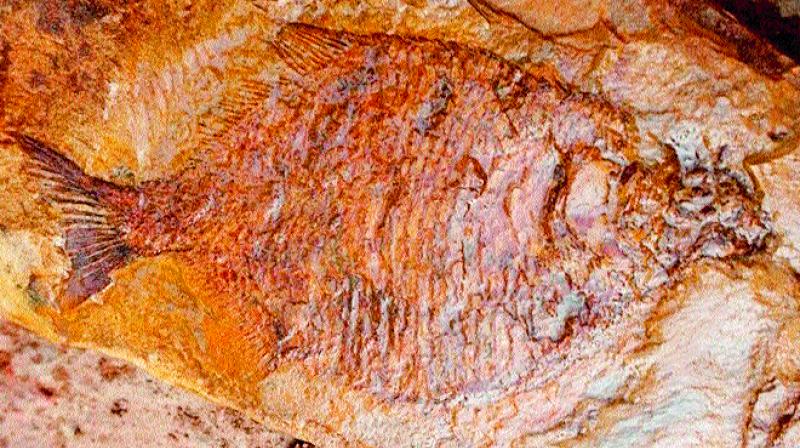Negligent Telangana government has no plans for a fossil park

Hyderabad: While a fossil eco-park is being developed with fossils of trees, fish, leaves and animals from the Permian, Triassic and Jurassic ages in Sironcha, Maharashtra, Telangana state forest department has neglected the Kataram-Mahadevpur-Yamanapalli site in Adilabad district despite a number of fossils found in the Pranahita-Godavari valley of the same area.
Scientists from the Geological Survey of India had earlier excavated fossils of dinosaurs and other animals and plants, and had placed them in their museum at GSI Southern Region headquarters at Bandlaguda, and another dinosaur fossil at the Birla Science Centre, both in Hyderabad.
Despite the Pranahita Godavari Valley having a huge potential, no further excavation work has been taken up in the past three to four years in Adilabad.
A composite skeleton of a dinosaur – Kotasaurus yamanpalliensis Yadagiri (named after Yamanapalli village and scientist Yadagiri) – was installed at the Birla Science Centre, Hyderabad. An articulated skeleton of a Rhynchosaur with the skull and other bone elements that was discovered in the Triassic rocks of the P-G Valley was also put up at the museum.
According to scientists, apart from dinosaurs, fossils of other reptiles, fish and micromammals were available at the site. “Plant fossils and charaphytes are also known to be found from the Kota Formation. Fieldwork was carried out in Jakkepalli, Lingala and Metpalli areas of Adilabad,” said a scientist.
The fossil of a dinosaur – Barapasaurus tagorii – has been discovered by scientists of ISI, Kolkata, from the site near Sironcha on the eastern side of the Pranahita.
Mr Mathen ‘Rajeev’ Mathew, member of the National Biodiversity Authority and the Telangana State Biodiversity Board, said after a visit to the Wadadham Palem area in Sironcha: “The timeline of the area is 200 million years, preserved in the Gondwana, which was one of the two super continents predating Pangaea. Fossils of trees have been found here along with those of dinosaur eggs.”
He said the fossils were exposed due to floods in the recent past. The tree fossils were of coniferous species going by the outer layer of the bark. “The tree fossils are darkening/blackening, possibly due to some fungal or biotic attack or exposure to the elements. The dinosaurs eggs were found in the area and partially buried in loose sand and mud, suggesting that they were washed up,” he said.
He added, “The flooding that exposed the fossils is the likely reason why the dinosaur eggs had washed away from their paleo nests. Further investigations with expert digging would provide a wealth of information regarding the paleobotany and paleozoology. A portion of the area should be turned into a paleo park where the finds can be displayed to the people.”

